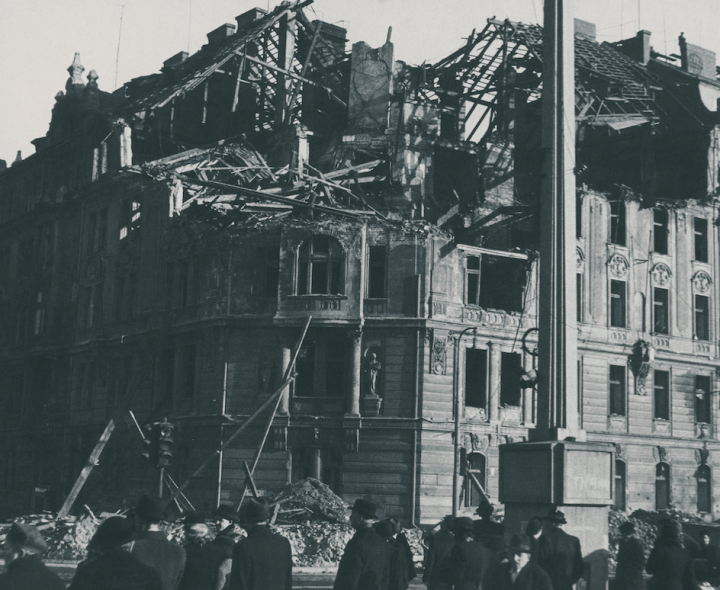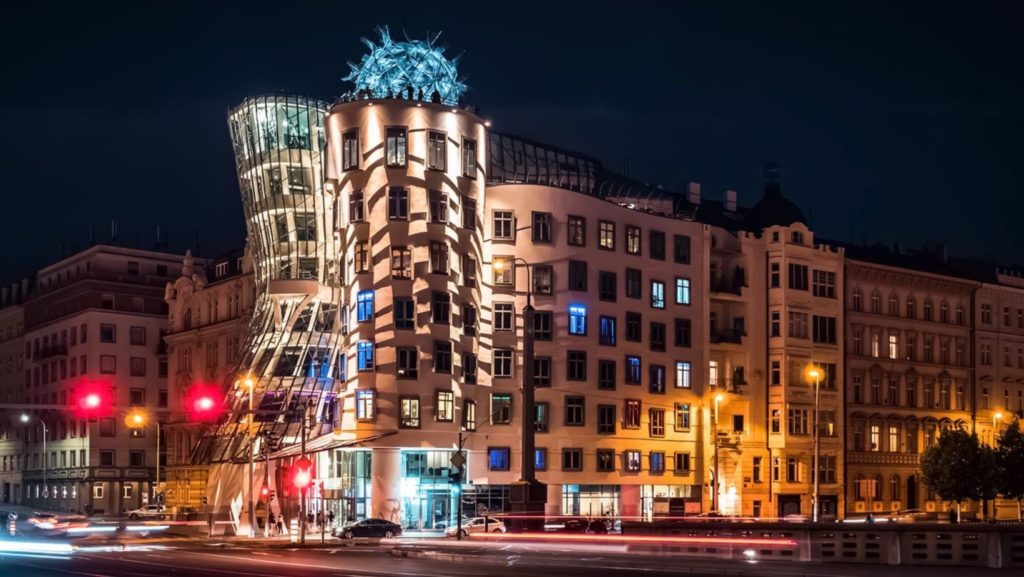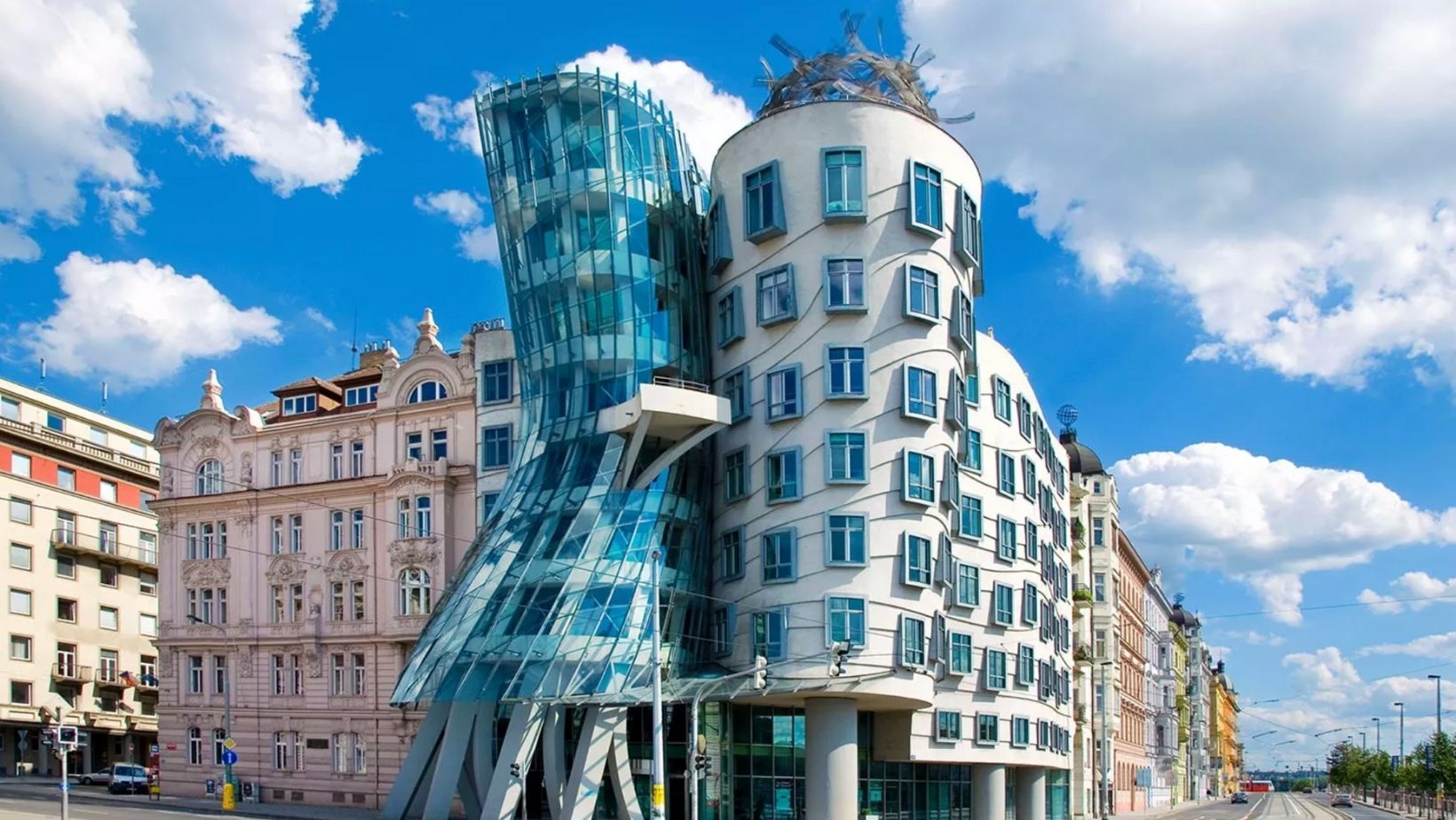The Dancing House, designed by Vlad Milunić and the famous architect Frank Gehry, has become an icon of modern architecture and one of the most famous buildings in Prague.
The building is metaphorically called the Dancing House or also Ginger and Fred, because of the towers reminding of the famous dancers Ginger Rogers and Fred Astair, a famous pair from the classic 1930s Hollywood movies.
The male part of the dancing couple is represented by a rock tower and the woman is symbolized by a tower made of glass, while the top of the male tower is covered with imaginary hair.
The interiors were partly designed by the British architect of Czech provenience Eva Jiřičná.
Vaclav Havel was the one who had the idea to build a house with a view here 30 years ago – a place that would serve as an art gallery and at the same time complete the street that had been empty for more than 40 years.
A Neo-Baroque house used to stand here in the past, but it was destroyed by an American bomb after an accidental airstrike on Prague in 1945. Being an artist himself, Havel loved all kinds of art, thus he more than welcomed and supported any such activity.

In 1992, the site was bought by the Dutch bank Nationale Nederlanden (today ING), with a plan to put up a building for their new head office for Central Europe here. Since the top management of the company took immense care to make their new headquarters look impressive, they offered an almost unlimited budget for its construction.
Starting with their first meeting in Geneva, Gehry and Milunić began to develop Milunić’s original idea of a building consisting of two parts, static and dynamic (“yin and yang”), which were to symbolize the transition of Czechoslovakia from a communist regime to parliamentary democracy.
The grand opening took place on the 20th of June 1996, with the house immediately being in the spotlight of attention. Some claimed that it didn’t blend into the neighborhood composed mostly of Art Nouveau apartment buildings and that it disturbed the historical panorama of the Czech capital.
Others argued that it was a daring project finally bringing quality contemporary architecture to Prague and the Czech Republic.
The Dancing House has evoked contradictory reactions ever since its completion to the present day, but it has become an integral part of Prague.
The building won the prestigious award of the American magazine Time in the category of design of the year.

The structure
The building is made of 99 prefabricated reinforced concrete panels. On the top of the building is a large twisted structure of metal nicknamed Mary’.
The facade is covered with wrinkled lines inspired by the waves of the Vltava river.
The entire structure is asymmetrical, seemingly in movement. It doesn’t respect the former boundaries or architectural design of the surrounding buildings and it’s an archetypal representative of the style recognized as deconstructivist.
Support Prague Morning!
We are proud to provide our readers from around the world with independent, and unbiased news for free.
Our dedicated team supports the local community, foreign residents and visitors of all nationalities through our website, social media and newsletter.
We appreciate that not everyone can afford to pay for our services but if you are able to, we ask you to support Prague Morning by making a contribution – no matter how small 🙂 .





